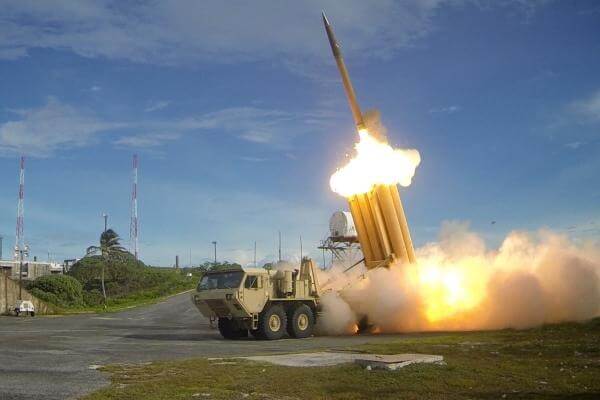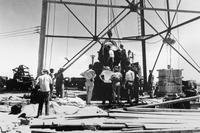U.S. missile defense officials told lawmakers Wednesday that the Pentagon is in talks with South Korea to deploy a missile defense system to counter North Korea's aggressive military strategy.
Brian McKeon, principal deputy undersecretary of defense for policy at the Pentagon, told members of the Senate Armed Services Committee that "we have opened consultations with our Korean partners" about deploying Terminal High Altitude Area Defense, or THAAD to the peninsula.
"We would engage in discussions about a possible site before we reach an announcement," McKeon said. "The purpose of the THAAD battery would be to protect our deployed forces in Korea and our partners in Korea," he said.
The proposal for the THAAD batter deployment came up in February after North Korea's launch of satellite atop what could be developed as a long-range intercontinental ballistic missile capable of hitting the United States.
China has warned against the U.S. plan in the past and South Korea has previously been non-committal on the deployment of the system within its borders.
Sen. Angus King, and Independent from Maine, asked if there has been any reaction from China.
"They are not happy about it," McKeon said. "It's not about China. It's not a threat to China, and we have made that plain to them and offered to explain it to them."
Other lawmakers showed concern about North Korea's flurry of recent missile tests and the country's ability to threaten the United States.
"You mentioned it's a low probability that North Korea could miniaturize a nuclear weapon on an ICBM and hit the United States," said Sen. Dan Sullivan, a Republican from Alaska, speaking to Adm. William Gortney, commander of U.S. Northern Command and commander of North American Aerospace Defense Command.
"But in your assessment, that is unlikely to stay low, isn't that correct?" Sullivan asked. "It seems like almost every day we are seeing a new news story about ICBM engines and other things being developed, so isn't prudent to assume that that low probability is going to morph into moderate or even high in the next five to 10 years?"
"Yes sir," Gortney answered. "It's only a matter of time before they put it together, that's why we watch their test efforts so closely."
In January, North Korea said its test of a "miniaturized" hydrogen bomb was a "perfect success" -- a claim that, if true, would confirm fears among Western observers that it was closer to developing nuclear warheads for long-range missiles capable of reaching the U.S.
The United States acknowledged "seismic activity" near a nuclear site in the country but stopped short of confirming the claim.
The test marked the country's third demonstration of nuclear technology since 2006 and its first thermonuclear detonation. A hydrogen bomb is far more powerful than an atomic bomb and relies on the heat generated from nuclear fission to trigger a fusion reaction.
North Korea has steadily increased the explosive power, or yield, of its previous nuclear tests, from less than a kiloton in 2006 to about two kilotons in 2009 to six to seven kilotons in 2013, according to the Congressional Research Service.
The first two tests are believed to have used plutonium rather than highly enriched uranium. Obtaining the fissile material is the main hurdle in building a nuclear weapon. North Korea is estimated to have between 30 and 50 kilograms of separated plutonium -- enough for four to seven weapons, according to the 2013 report from the CRS.
North Korea has spent decades trying to perfect a multistage, long-range missile to eventually carry smaller versions of nuclear bombs, the Associated Press reported. After several failures, it put its first satellite into space with a long-range rocket launched in December 2012, the AP reported.
After North Korea's 2013 underground nuclear detonation, the U.S. flew pairs of stealth aircraft over South Korea, including F-22 fighter jets and nuclear-capable B-2 bombers, in a show of force against the North.
--Brendan McGarry contributed to this story.
--Matthew Cox can be reached at matthew.cox@military.com.




























